Just at the colonial pattern sun helmet remains an iconic image of Britain’s “Soldiers of the Queen,” this style helmet was worn by the French forces in far flung conflicts. And whereas the British pattern seemed to evolve with numerous nuances and differences in a plethora of patterns and variations, the French military relied on basically two colonial patterns.
France had been a rival and often times an adversary of the English and later the British throughout the Middle Ages in Europe. The two nations become colonial rivals throughout the 17th and 18th centuries, and even after the two nations became allies of sorts in the middle of the 19th century colonial rivalries continued. In fact, while largely forgotten now the British and France nearly faced off in a war over the Sudan in 1896, but cooler heads prevailed and the two nations became partners as the world moved to what would become the First World War.
France saw the final end of its first colonial empire in the early 19th century after Emperor Napoleon sold what remained of “New France” to the young United States. However his grand nephew Napoleon III helped create a new colonial empire for France during the Second Empire, one that grew substantially under the Third Republic.
While it is often said the “sun never set on the British Empire,” in truth the French Empire was quite vast in its own right, and by the dawn of 20th century France continued just slightly less land on the map than the British. It would work to retain much of this empire until the 1950s.
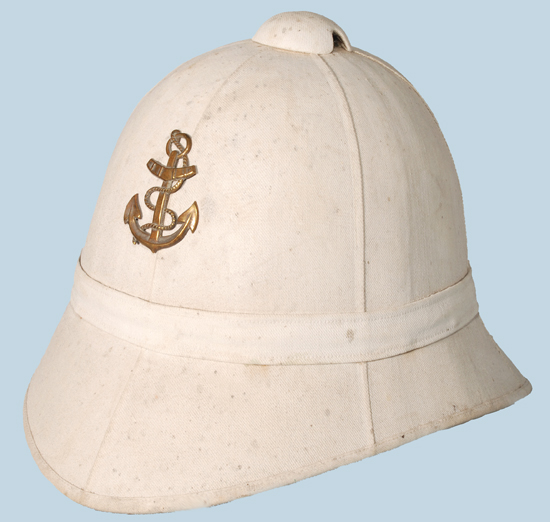
The Model 1878 pattern helmet featured a six panel construction and was likely inspired by the British colonial pattern “Foreign Service Helmet”
During much of this period the French relied on the colonial pattern, a helmet that stayed in favor and in use far longer and later than the British colonial pattern helmets. In fact while the Wolesley and later Sola Topees eventually became the de facto headdress in tropical regions by the early part of the 20th century, the French colonial pattern helmets remained in use until long after World War I.
This French Model 1878 was likely based on the British colonial pattern helmets that began to make an appearance earlier in the decade. These helmets featured a six-panel construction with a ventilator cap at the top. The helmets were covered in a light tan-colored canvas cloth, which was then colored white on the exterior. The M78 helmet – as these are known – featured a leather or canvas liner band, but typically lacked any spacers to help provide ventilation.
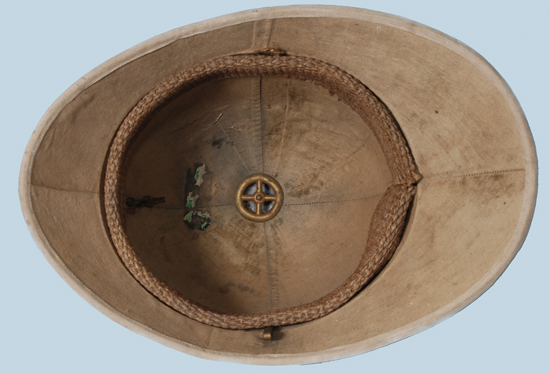
The liner of the M78 helmet shows that this pattern lacked spacers at the liner band to help provide ventilation.
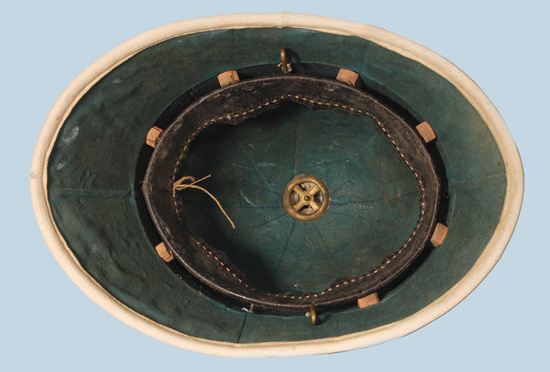
Unlike the M78 pattern, the M86 pattern saw the addition of cork spacers to provide ventilation. The M86 pattern is also notable for featuring a dark green interior, something that is seen in almost all examples.
This could be why the helmet was refined only a few short years later. The Model 1886 helmet – which earned the nickname the “sugar loaf” helmet – featured far less flair in either the front or rear brim of the helmet. As with the predecessor it featured a six-panel construction.
Photographic evidence suggests these helmets were used at the same time, and perhaps because of its short lifespan before being replaced this is why M78 helmets are far less common. Both helmets were used throughout the French colonial empire, and these helmets seemed well suited to the desert of North Africa to the jungles of South East Asia.
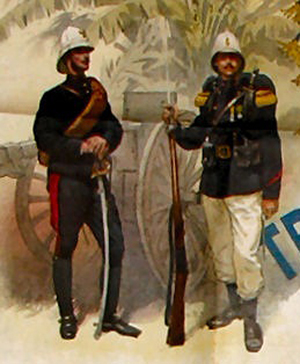
An 1890′s period postcard shows two “Troupes de Marine” in uniform wearing M78 (officer on the left) and M86 (NCO on the right).
These helmets are usually encountered with either an anchor or a flaming bomb. In the case of the later it was not for the “navy” but rather the Troupes de Marine – the French Marine Infantry. This is because in the era of the Third Republic it was the law that French conscripts in the army could not be forced to serve outside Europe, but at the same time there was feeling that a volunteer force could be equated to an elite guard – the latter of which aided to Bonaparte emperors the throne. This explains why many of these helmets are found with the anchor for the Marine Infantry.
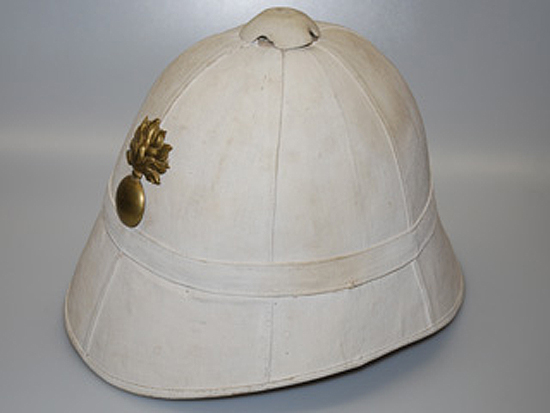
Another M86 pattern helmet with a flaming bomb insignia that was used by the French Foreign Legion prior to World War I.
The flaming bomb, which is typically equated with the symbol of the French Infantry – as it was used on the French M1915 “Adrian” steel helmet – was also used by the Gendarmerie and the Foreign Legion. Thus most of the colonial pattern helmets issued prior to the First World War were either Gendarmerie or Foreign Legion This pattern helmet remained in use, and was even adopted by the French Army during the First World War.
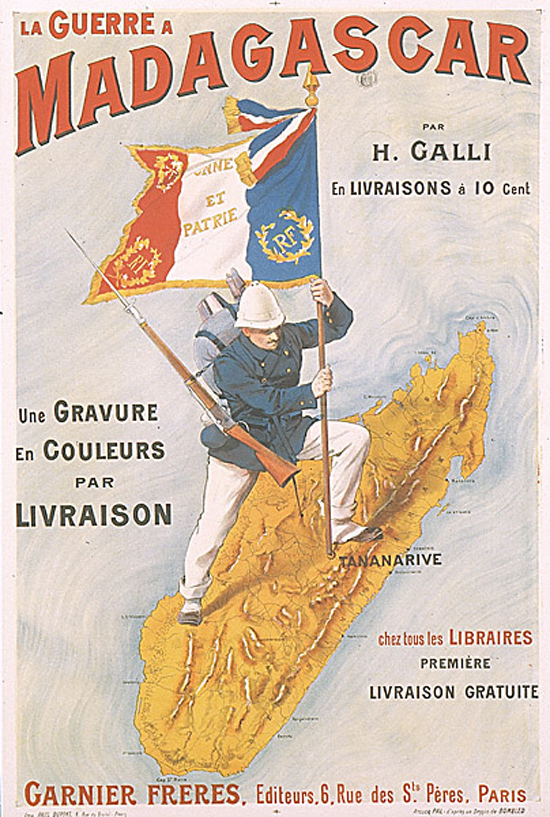
The cover of the book “The War in Madagascar” shows a French soldier wearing what appears to be an M78 helmet.
Both the M78 and M86 pattern helmets were produced in Paris and Marseille, with more coming from the latter – however it is possible helmets were made in Paris but issued via depots in Marseille.
The colonial pattern helmet remained in use through World War I and into the 1920s until it was finally replaced quickly by the Model 1931 helmet. With the outbreak of World War II less than a decade after the introduction of the M31 helmet the colonial pattern “sugar loaf” was all but completely removed from service, with just few remote French posts still using remaining stocks.
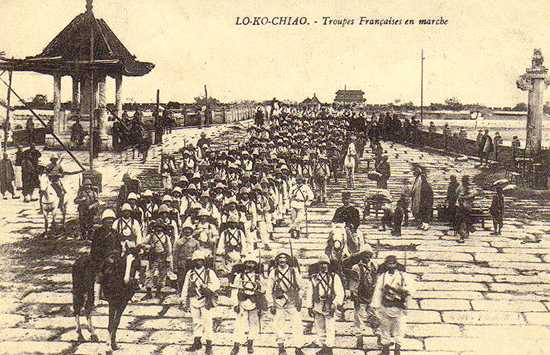
French soldiers at the Lo-Ko-Chiao bridge in China during the Boxer Rebellion. Note that most of the French soldiers are wearing colonial pattern helmets.
Peter Suciu

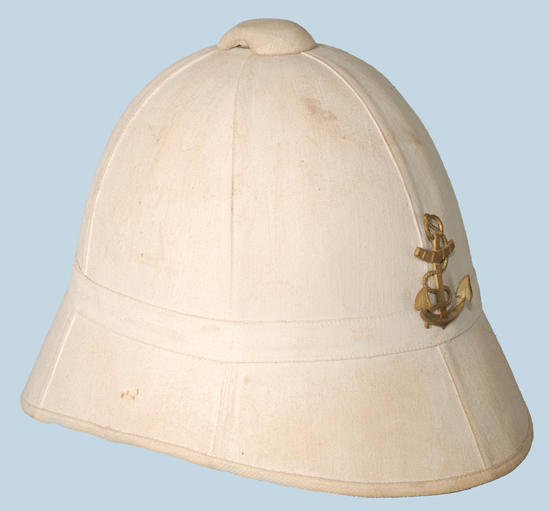
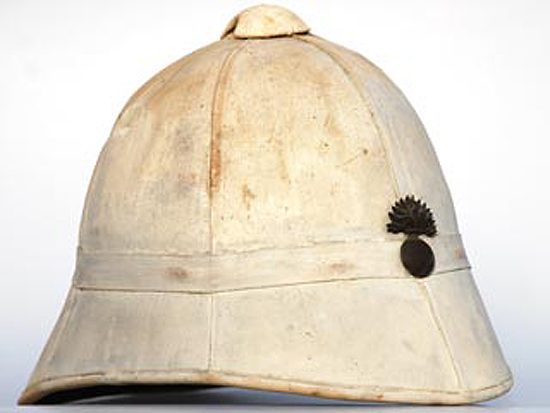
Hi,
My 1874 have a rigid cloth band in zigzag around the liner and between the liner an the interior of the helmet to provide ventilation. I am not sure the one you present is a regular one, or can be a tailor or civilian made.
Please note also that the brass anchor is not at all for the 1878 that never had any attribute. Anchor and grenade were worn only on the 1886.
On mine, there are also 2 ventilation bolts (kind of plastic or similar) on each side, at about 1/3 of the helmet from its top.
Regards,
Eric
Thank you for the comment. I don’t speak French and can only read some of it. I don’t have the official regulations but I have sources that suggest badges were worn on the 1878 helmet at least when these were still worn and overlapped with the 1886 helmet.